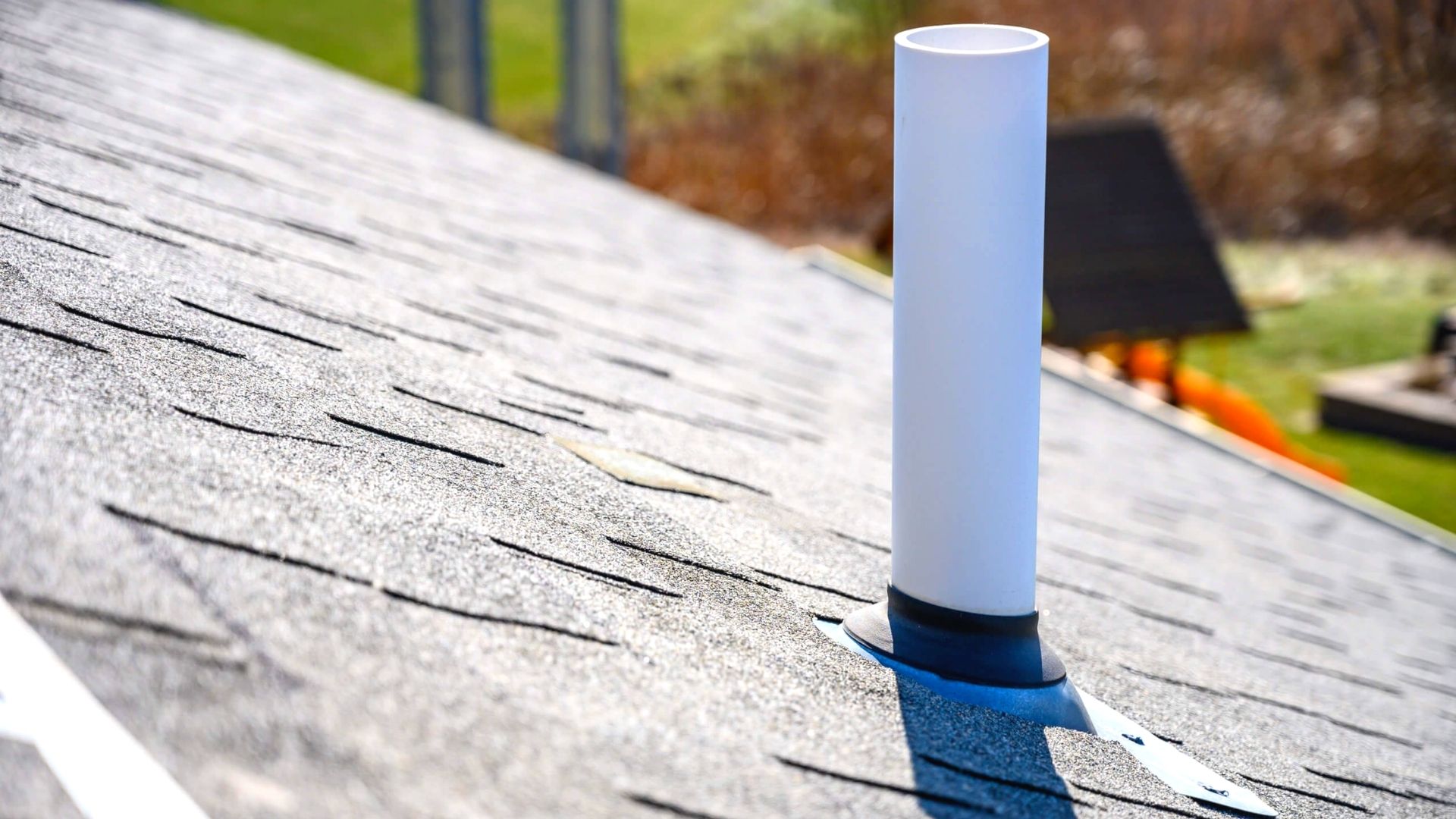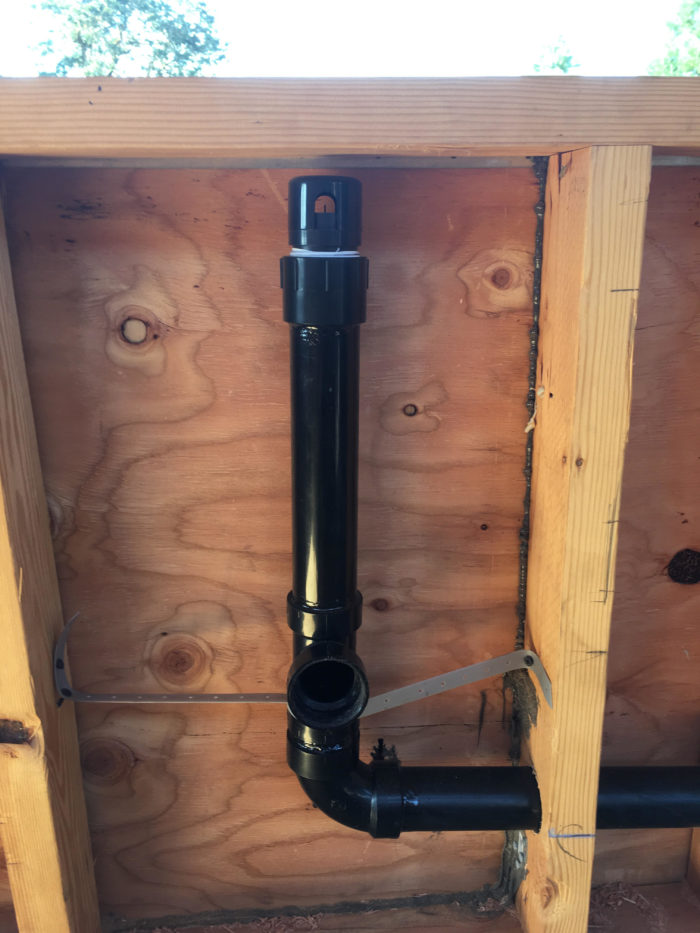We have stumbled on this post about What Is a Plumbing Vent and Why Is It Important below on the net and thought it made perfect sense to relate it with you on this page.

Correct ventilation in pipes systems is often ignored, yet it is crucial for maintaining the functionality and security of your home's plumbing. Ventilation helps regulate atmospheric pressure, protect against the build-up of dangerous gases, and make sure the effective removal of waste. In this overview, we will certainly check out the relevance of appropriate pipes air flow, just how it works, and the benefits it offers your plumbing system.
How Ventilation Works in Plumbing Solutions
Air Pressure Policy
Correct ventilation preserves well balanced atmospheric pressure within the pipes system. When water flows via pipelines, it displaces air. Without ample ventilation, this variation can produce adverse pressure, bring about slow down drains pipes or siphoning of water from catches, which can trigger undesirable smells to leak into the home.
Stopping Sewage System Gas Buildup
One of one of the most critical functions of pipes vents is to prevent sewage system gases, such as methane and hydrogen sulfide, from gathering within the home. These gases can posture major health and wellness threats and are highly flammable. Vent pipelines allow these gases to escape securely outdoors.
Assisting in Waste Removal
Air flow helps in the effective removal of wastewater by avoiding airlocks in the drainage system. When air can move easily with the vents, it enables water and waste to flow efficiently via the pipelines, lowering the danger of clogs and backups.
Advantages of Correct Air Flow
Boosted System Effectiveness
Appropriately ventilated plumbing systems operate much more efficiently, with fewer obstructions, faster draining pipes, and less strain on the pipelines. This efficiency prolongs the life-span of the plumbing system.
Improved Air Top Quality
By avoiding sewer gases from entering your home, proper air flow contributes to better indoor air quality, making your living atmosphere healthier and a lot more comfy.
Protecting Against Water Damages
Adequate air flow aids protect against water from being siphoned out of catches, which can bring about sewage system gases going into the home and triggering water damage over time.
Actions to Make Certain Appropriate Air Flow
Consulting Plumbing Codes
Always speak with local plumbing codes when developing or modifying your plumbing system. These codes offer the essential guidelines for correct airing vent and guarantee your system satisfies security criteria.
Regular Assessment and Upkeep
Routine examinations can assist identify possible air flow concerns before they end up being major problems. Upkeep jobs, such as cleaning up air vent pipes and checking for clogs, are important for maintaining the system in good working order.
Expert Setup
For new setups or major alterations, it's smart to hire a specialist plumbing professional. They have the expertise to guarantee the air flow system is appropriately designed and mounted according to code.
Recognizing Air Flow in Plumbing
Ventilation in plumbing refers to the network of pipes that allow air to flow via the water drainage system. These vents serve multiple objectives, including regulating atmospheric pressure within the pipelines, protecting against sewage system gases from going into the home, and aiding in the smooth circulation of wastewater.
Kinds Of Plumbing Vents
Key Stack Vent
The primary pile air vent, also called the air vent pile, is the primary vent in a pipes system. It extends from the major drainpipe align with the roof covering, permitting gases to leave and fresh air to get in the system.
Branch Vent
Branch vents connect to the primary pile vent and serve specific fixtures, such as sinks, commodes, and showers. These vents ensure that each component has appropriate ventilation to operate effectively.
Air Admittance Shutoff (AAV).
An Air Admittance Shutoff (AAV) is a one-way shutoff that allows air to enter the plumbing system without the demand for a conventional air vent pipeline expanding through the roofing system. AAVs are frequently made use of in improvements or areas where installing a basic air vent is not practical.
Signs of Poor Air Flow in Plumbing.
Slow Draining Fixtures.
If your sinks, tubs, or commodes are draining pipes gradually, maybe an indicator of inadequate air flow. Inadequate air flow can produce a vacuum cleaner result, making it tough for water to drain effectively.
Gurgling Appears.
Gurgling noises coming from drains pipes are typically a result of air being sucked via water traps because of adverse pressure in the pipelines. This is a clear indication of insufficient air flow.
Undesirable Smells.
Sewer odors inside your home are a red flag that your pipes system is not correctly ventilated. This can imply that sewer gases are not being adequately vented outside, leading to possibly dangerous conditions.
Usual Air Flow Errors.
Insufficient Vent Sizing.
Making use of small air vent pipes can result in poor air flow and stress discrepancies in the system. It's vital to utilize vents that meet the details needs of your plumbing system.
Improper Vent Positioning.
Putting vents too much from the fixtures they offer can decrease their performance. Proper placement makes sure that air can stream freely and successfully via the system.
Ignoring Code Requirements.
Building codes give particular standards for pipes air flow. Neglecting these codes can result in a system that fails to work appropriately and might lead to pricey repair work or carcinogen.
Conclusion.
Proper air flow is an important part of any type of pipes system, guaranteeing that it operates efficiently and safely. By recognizing the relevance of air flow, recognizing the signs of bad air flow, and taking steps to maintain your system, you can protect against pricey issues and protect your home's air top quality.
4 Things You Should Know About Your Plumbing Vents
What Plumbing Vents Are
Also called a vent stack, a plumbing vent is a vertical pipe attached to your drain line that runs through your roof. The plumbing vent pipe, or plumbing air vent, removes gas and odors from your plumbing system and allows fresh air to enter the pipes, helping the water to flow out of the drain pipes.
What Plumbing Vents Do
Plumbing vents have two basic functions. One of which is to allow unpleasant smelling wastewater and sewer gasses to escape your plumbing system instead of entering your home. Plumbing vent pipes are typically located on roofs, away from windows, to ensure the fumes exit the home completely.
The other function of the plumbing vent is to move fresh air into your plumbing system. This helps move water through every plumbing fixture in your house, like toilets and sink drains. Think of the way in which you need to let a little air into the bottle as you pour soda in order to make the drink flow smoothly.
Different Types of Plumbing Vents
True vent: This is the most common vent option. In simplest terms, a true vent is a vertical pipe attached to your drain line that exits through the roof. They often function as the main vent that other fixtures can connect to. Re-vent pipe or auxiliary vent: Attached to the drain line near specific plumbing fixtures, re-vent pipes run up and over to connect to the main vent. Common vent: Two plumbing fixtures installed on opposite sides of a wall are typically tied into the vent stack using something known as a sanitary cross. Wet vent: This venting option operates as a drain pipe and a vent at the same time. Wet vent drainage systems drain water from one fixture while venting the air from another. Although they’ve been used for over 100 years, wet vent systems have only recently been added to the plumbing code in many areas. If you’re planning on installing one in a bathroom remodel, make sure you check your local code prior to construction. Loop vent: For free-standing fixtures like kitchen island sinks, loop vents are ideal. These vent pipes run under the floor, rise from the P-trap, and create a loop inside the cabinet sink. Air admittance valve: An AAV is a one-way mechanical valve typically installed at the site of the plumbing fixture. AAVs allow venting to occur without having to tie into a larger venting system. They’re ideal for venting fixtures where you aren’t able to easily connect to an existing vent system. Common Plumbing Vent Issues
Although vent pipes typically don’t have water flowing through them, they’re still subject to many typical plumbing issues. For example, clogs are one of the most common problems associated with sewer vent pipes. If your vent pipe gets clogged, all of your plumbing fixtures tied into the vent stack will be affected.
A sink with a slow drain that bubbles and gurgles or a strong sewage smell around your toilet are both indicators that your toilet vent pipe is clogged. Because most vent pipes exit through the roof, old leaves, twigs or even a bird’s nest could be clogging the pipe.
Clogs in your vent pipe system cause a buildup of negative pressure, meaning that water won’t be able to flow out of your home very well. It’s similar to putting your finger over the opening of a straw to trap water inside. When you remove your finger, the water is able to flow out of the straw.
If you suspect you have any blockage in your vent, make sure you have a professional come examine the situation. Left unchecked, a blocked air vent can lead to other costly repairs, like leaks and sediment buildup.
Under Pressure
Pipe vents are essential aspects of a home’s plumbing system. Owning a home means learning about all sorts of things you never put much thought into before. But by understanding as much as you can about the important systems of your home, you can keep those budgets intact and those anxiety levels low.
https://www.homeserve.com/en-us/blog/home-improvement/plumbing-vents/

As an avid reader on What Is A Plumbing Vent & How Do They Work?, I think sharing that article was important. Are you aware of another individual who is involved in the topic? Take a moment to promote it. Thank you so much for your time invested reading it.
Visit Url